This is a question that inevitably arises when you consider switching from SLR to a hybrid system: what to do with your old SLR lenses? With two f/2.8 models in the catalogue, a Nikon 24-70 comparison is a must.
The Nikon 24-70s at Miss Digital
To help you in your reflections, we thought that this comparison of the two Nikon 24-70mm f/2.8, mounted on the very demanding Nikon Z 7 body, would allow you to evaluate which option was the most cost-effective and beneficial.
Do you have to resell them to acquire models in native hybrid mount, or extend their life by adapting them with the appropriate ring?
The first option offers the advantage of serenity, with the assurance of perfect compatibility and optimization mechanical, electronic, optical.
The second option offers the advantage of sustainability, sparing you the need to retire early from a goal that, after all, has served you well in the past. What’s more, it’s far less expensive to buy just an adaptive ring rather than a complete, brand-new goal.
In the case of our two competitors of the day, the question of price will be of particular importance. Indeed, at the official price list, the AF-S Nikkor 24-70mm f/2.8E ED VR for Nikon SLRs now costs 2199 euros (2499 euros when it comes out in 2016) while its counterpart for Nikon Z hybrids, the Nikkor Z 24-70mm f/2.8 S, is priced at 2499 euros.
At the same time, the FTZ ring, which allows you to mount F-mount lenses on Z-mount bodies, is sold for 299 euros… if you plan to buy it out of the kit. When magnified, this makes a one-to-eight-fold ratio between purchasing this ring and replacing your AF-S Nikkor 24-70mm f/2.8E ED VR with its Z-mount equivalent. That’s something to think twice about!
In recent years, when it comes to the 24-70mm f/2.8 standard, Nikon hasn’t done much to make your life (or your wallet) easier.
In 2016, in F-mount, the AF-S Nikkor 24-70mm f/2.8E ED VR replaced (actually seconded) the AF-S Nikkor 24-70mm f/2.8G ED by providing stabilization (see test and comparison).
Problem: it resulted in a bigger, heavier, more expensive lens, stabilized but not necessarily better. Should you replace your precious 24-70 f/2.8, or should you delay?
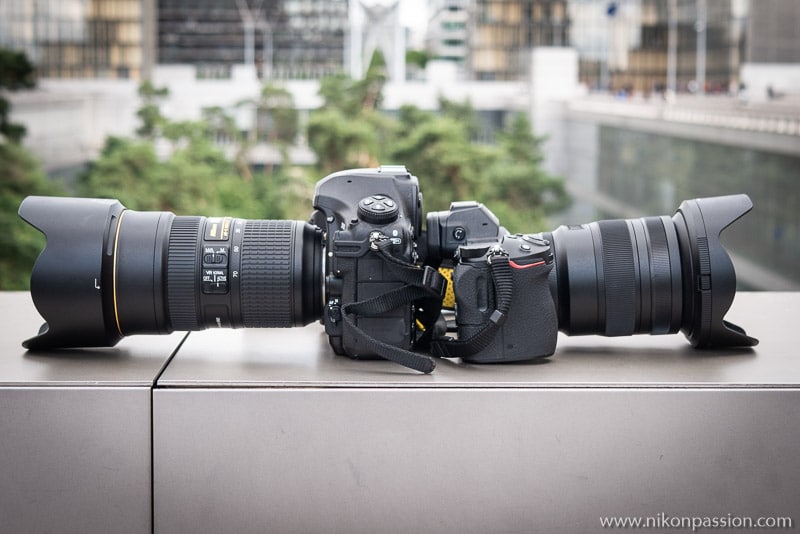
comparative Nikon 24-70 mm f/2.8
left Nikon D850 + AF-S Nikkor 24-70 mm f/2.8 E ED VR
right Nikon Z 7 + Nikkor Z 24-70 mm f/2.8 S
This year, it’s a new look, but with a new frame: to accompany its 24 x 36 mm hybrids in Z-mount, Nikon has deployed all its science to design the Nikkor Z 24-70 mm f/2.8 S.
Very good, even excellent, it is however devoid of optical stabilization, since this is provided by the sensor. You who have already invested several thousand Euros for the AF-S Nikkor 24-70 mm f/2.8E ED VR, you must feel a little betrayed, especially since the newcomer, although more expensive today (but at the same price as the AF-S Nikkor 24-70mm f/2.8E ED VR when it was released.), is more compact, lighter and decidedly more modern. What to do, what to do?
In a world of unlimited money, keeping your F-mount gear while investing in Z-mount gear would be the simplest solution. But far from being accessible to everyone.
If you are already equipped with an F-SLR and want to try out the hybrid in Z-mount without giving up the SLR completely, the question doesn’t arise: in any case, you will keep your AF-S Nikkor 24-70mm f/2.8E ED VR (or your AF-S Nikkor 24-70mm f/2.8G ED) and then use it on your hybrid via the FTZ ring. And possibly consider purchasing a Nikkor Z 24-70 mm f/2.8 S at a later date.
Third case: if you are in the situation of the photographer who wants to make the big leap from SLR to hybrid and want to shoot only hybrid, you will have the choice to either resell your AF-S Nikkor 24-70mm f/2.8E ED VR (if you own one) to acquire a Nikkor Z 24-70mm f/2.8 S, or keep it and use it via an adapter ring.
Finally, one last scenario: you’re new to Nikon, you don’t own a lens, you’re launching directly with the Z-mount hybrids, but since the 2499 euros required for the 24-70 mm f/2.8 in Z-mount tend to cool you down, you’re wondering if it wouldn’t be wiser to turn to the equivalent in F-mount, which is certainly bigger, but cheaper, and use it with an FTZ ring.
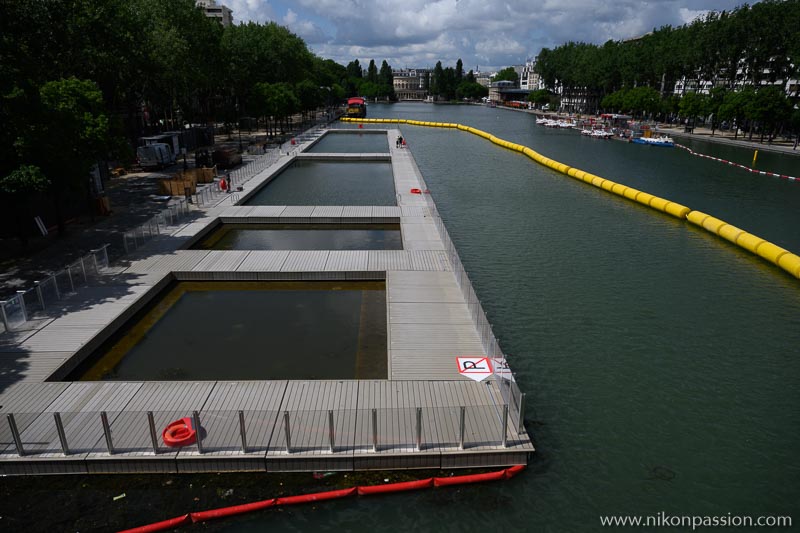
Nikon Z 7 + Nikkor Z 24-70 mm f/2.8 S – ISO 100 – 24 mm – 1/1250th – f/5.6
As you will understand, we will only compare the AF-S Nikkor 24-70mm f/2.8E ED VR and the Nikkor Z 24-70mm f/2.8 S in the following. For logistical reasons we have not extended the comparison to the AF-S 24-70 mm f/2.8G ED, nor to the 24-70 mm f/2.8 from Tamron or Sigma. Most of our remarks, however, can easily be extrapolated to help you decide.
Finally, for practical reasons and to make the reading of the comparative more digestible, we will use abbreviations to refer to the two zooms:
- Z-2470 will refer to the Nikkor Z 24-70 mm f/2.8 S (in Z-mount for hybrid),
- F-2470 will refer to the Nikkor AF-S 24-70mm f/2.8E ED VR (in F-mount for DSLR).
2499 euros is the price of Z-2470. You won’t cut it unless you take advantage of local promotions. The target, released in spring 2019, is, at the time of writing, not yet available for sale (except perhaps on very rare occasions). So don’t expect to save money in this way.
Opposite, the F-2470 costs 2199 euros in the Nikon catalogue but in the shop you will find it around 2000 euros.
By searching well, you will come across online offers around 1550 euros for new objectives: run away! These are grey market shops, which border on illegality since resellers offer these attractive rates by not paying their intra-community VAT or customs taxes. It will then be up to you to pay them, and may be sanctioned in case of control. In addition, these targets coming from Hong Kong, their guarantee is not valid in France (nor in Europe). In short, false economies.
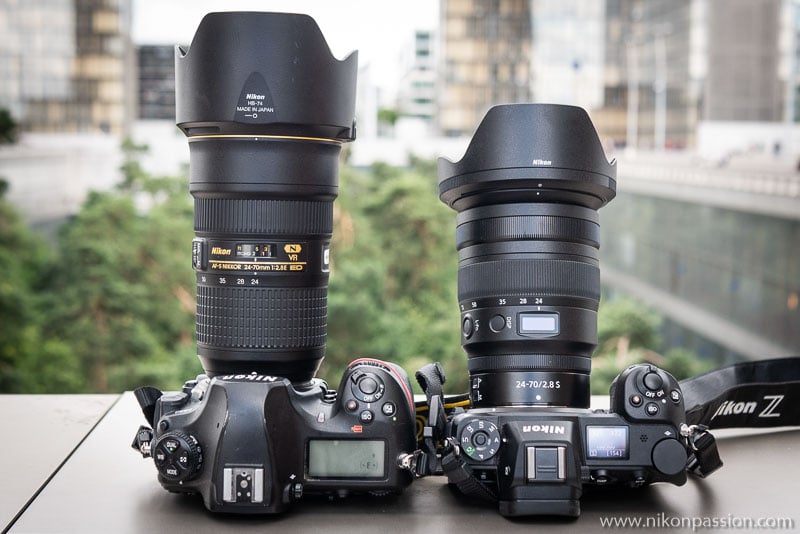
comparative Nikon 24-70 mm f/2.8
left Nikon D850 + AF-S Nikkor 24-70 mm f/2.8 E ED VR
right Nikon Z 7 + Nikkor Z 24-70 mm f/2.8 S
The F-2470 is, despite all the criticism, a well-born and satisfying target. The proof: it remains rare on the second-hand market, with a sustained price tag. The few examples available in the photo ads on the forums and on the platforms dedicated to the occasion are traded for around 1600-1700 euros: that’s almost the price of a new lens… excluding tax (2199 euros – 20% VAT = 1759.20 euros).
It may therefore be interesting to resell your F-2470 now for 1700 euros. You will then “only” have to add 800 euros to get the Z-2470. Bearing in mind that if you prefer to keep your F-2470, the FTZ ring will cost you 299 euros (excluding the purchase of a case + ring kit). Which basically brings the cost of investing in a brand new Z-2470 down to 500 euros. Less expensive than a Nikkor Z 24-70 mm f/4 S, even in kit ! The game can be worth it.
If you own an AF-S Nikkor 24-70mm f/2.8G ED, the unstabilized version, the operation is a little less interesting since currently the cost of this zoom is rather between 900 and 1000 euros. The extra cost of the complete switch to the Z-2470 will be 1500 euros if you manage to resell your lens. In this case, it may be better to just adapt it via the FTZ ring and, if necessary, spend the remaining money on another Z-mount lens, for example the excellent Nikkor Z 14-30mm f/4, and postpone your purchase of a Z-2470 until later, when its price will have dropped.
If you keep your 24-70 mm f/2.8 in F-mount, you will still face the same grip “worries” as with the stabilized F-2470. Yes, it’s a bit of a mouthful.
Getting Started: Advantage Z
A picture is better than a long speech, here is side by side the Nikon Z 7 with the Z-2470 alongside the F-2470 associated with the FTZ ring:
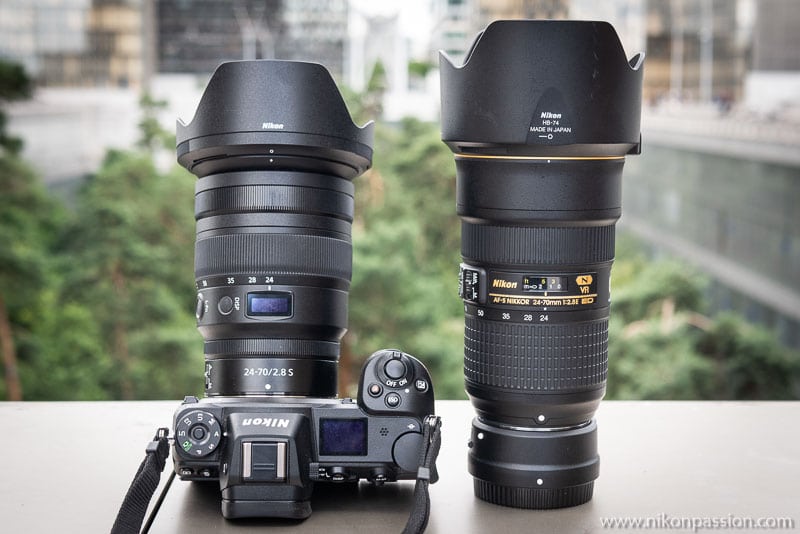
comparative Nikon 24-70 mm f/2.8
left Nikon Z 7 + Nikkor Z 24-70 mm f/2.8 S
to the right AF-S Nikkor 24-70 mm f/2.8 E ED VR + FTZ ring
The 100% hybrid package, including battery and XQD card, weighs 1537 grams. With the SLR lens (and ring), the weight of the coupling climbs to 1967 grams. That’s a difference of 430 grams and almost 2 kilos!
This is due to the fact that the Z-2470 lens weighs 805 grams while the F-2470 weighs over 1 kilogram (1070 grams to be precise), plus the 135 grams of the FTZ ring. By way of comparison, the Nikkor Z 14-30mm f/4 S weighs 485 grams: at the shoulder, a kit with a single trans-standard lens will weigh as much as a double kit with a wide-angle zoom and trans-standard lens.
In use, the Z-2470 digs the gap. More recent, it benefits from much more modern ergonomics than the F-2470. Of course, the stabilization switch disappears, but instead you get an OLED display, a function key and a programmable ring. The quality of construction is of the same level, even if, due to its weight, the SLR lens has a small additional tank side.
The hybrid lens, on the other hand, boasts a velvet-lined sunshade – we’ve already discussed at length the benefits of this aesthetic detail, which is more than just a detail. Finally, both lenses use 82mm filters: if you already have one, you won’t need to buy another one (or even a second UV filter if you decide to have both lenses in your fleet).
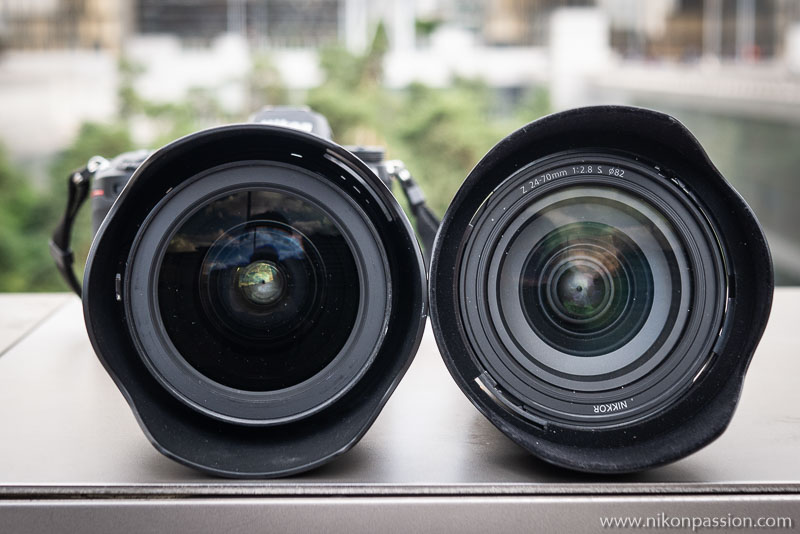
comparative Nikon 24-70 mm f/2.8
to the left AF-S Nikkor 24-70 mm f/2.8 E ED VR
to the right Nikkor Z 24-70 mm f/2.8 S
The presence of the OLED screen may seem very incidental, but in practice, the Z-2470’s ability to indicate the exact focal length is a definite plus. For example, if you’re the maniacal type and want to work at the 50mm hair-pile, just refer to the small screen to find the right position at a glance.
With the F-2470, you’ll have to grope your way around: as the graduations on the focus ring are not exact, if you position yourself at 50 mm, you’ll actually be somewhere between 48 mm and 52 mm. In fact, more like 48 mm. You will then have to go through the playback menu and consult the EXIF data to check the focal length you are actually working at. In jobs that require precision, this time saving quickly becomes noticeable and then indispensable. Try it, and you’ll love it.
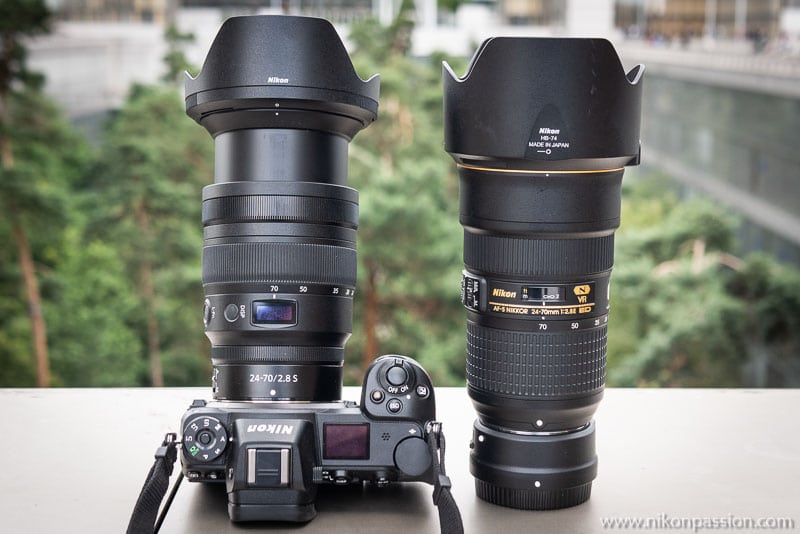
comparative Nikon 24-70 mm f/2.8
left Nikon Z 7 + Nikkor Z 24-70 mm f/2.8 S
to the right AF-S Nikkor 24-70 mm f/2.8 E ED VR + FTZ ring
In terms of pure ownership, there are three fundamental differences in the use of either objective.
The first is that zooming with the Z-2470 is done via a lengthening of the summer. With the F-2470, the shaft does not change in size: the movements of the front block are masked by the sunshade.
The second difference is the balancing of the whole when taking freehand photographs. Longer, heavier, the F-2470 + FTZ solution makes single-handed photography more complicated. The set will have a tendency to sting and, over long shooting sessions, your wrist will get tired faster.
As a direct consequence of the previous point, mounting on a tripod will not be done in the same way with either solution. In the 100 % hybrid configuration, the thread of the housing will have to be used. In the mixed configuration, the thread of the FTZ ring must be used.
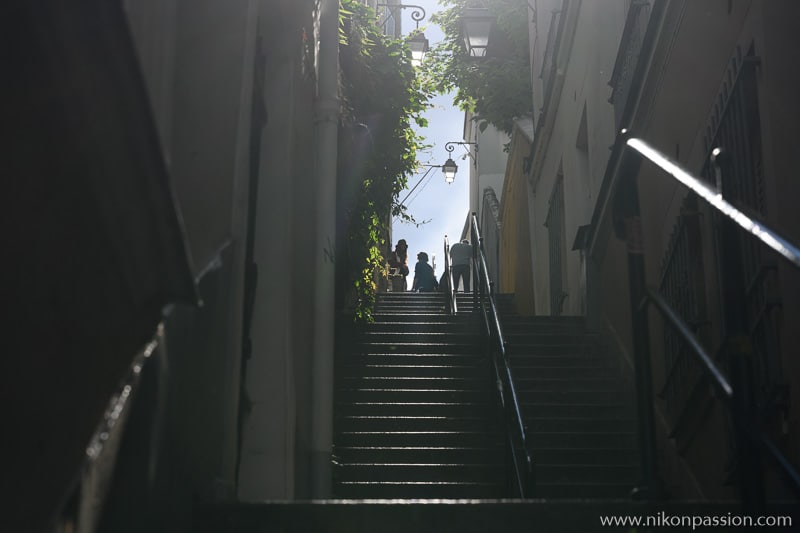
Nikon Z 7 + Nikkor Z 24-70 mm f/2.8 S – ISO 100 – 70 mm – 1/640th – f/5.6
What’s more, this thread adds extra thickness. If you mount your Nikon Z Hybrid on a long tripod plate (Manfrotto type), you will have to unscrew it and then screw it back through the ring: this manipulation is valid for any F-mount lens combined with the FTZ ring. Finally, please note that if you use a tripod with a short tripod plate or a ball head, the whole assembly will tend to stick out from the nose: the body is too light compared to the lens and you will have to pay extra attention.
Autofocus: Advantage Z
Nikon has done its job well, and because you’re never better served than by yourself, the FTZ ring allows the qualities of Nikkor’s F-mount lenses to be preserved to the maximum when mounted on Z-mount hybrids.
In most situations, the F-2470 and the Z-2470 play almost equally well when mounted on our Z 7 in this Nikon 24-70 comparison. When the light fades, the Z-2470 takes a slight rise, but the difference is too subtle to be really disabling.

Nikon Z 7 + Nikkor Z 24-70 mm f/2.8 S – ISO 100 – 70 mm – 1/1250th – f/4
However, the FTZ ring induces additional latency when the camera is switched on: even though Nikon Z cameras are not the fastest 24 x 36 mm hybrids when it comes to getting started, the few tenths of seconds lost when switching on can make the difference between the decisive moment or a missed appointment with the history of photography (if that’s your ambition).
Stabilization: Advantage Z
The F-2470 is a stabilized lens, and by combining it with a Z7 that is itself stabilized, what happens?
You could disable lens stabilization and leave it on the body only, or the other way around, but engineers have provided for this (F-VR lens on Z body). The tasks are then shared: the lens handles yaw and roll (left/right and up/down axis rotation), the camera handles pitch (front/rear axis rotation).

Nikon Z 7 + AF-S Nikkor 24-70 mm f/2.8 E ED VR + FTZ ring – ISO 100 – 70 mm – 1/250 th – f/2.8
If you disable lens stabilization, or use an AF-S 24-70 mm f/2.8G ED, the camera supports correction in all three axes. Finally, if you decide to disable the body stabilization and keep only the lens stabilization, you only keep the correction on two axes (left/right, up/down) and revert to the situation you already know from a conventional DSLR.
With a Z-mount lens, i.e. the Z-2470, the camera takes care of the correction around the three mentioned axes, as well as the correction of lateral and vertical vibrations, thus bringing the number of corrected axes to five. Of course, there is no sixth axis, which would correspond to a forward and backward movement, since this correction… it’s the focusing system, in this case the autofocus, that takes care of it.
Good. So much for the theory. For practice, it will be possible, with a minimum of training, to go down to 1/2 second at 24 mm with the Z-2470 and 1/4 second, still at 24 mm, with the F-2470. The difference doesn’t seem obvious when you say it like that, but it still represents a diaphragm.

comparative Nikon 24-70 mm f/2.8
Nikon Z 7 + AF-S Nikkor 24-70 mm f/2.8 E ED VR + FTZ ring – ISO 1000 – 24 mm – 0.5 sec – f/5.6

comparative Nikon 24-70 mm f/2.8
Nikon Z 7 + Nikkor Z 24-70 mm f/2.8 S – ISO 1000 – 24 mm – 0.5 sec – f/5.6
The difference is confirmed at the maximum focal length, 70 mm, where your waste rate will be much higher with the F-2470: we advise against going below a tenth of a second, whereas you can go down to ¼ by a tenth of a second with the Z-2470.
However, and this is one of the surprising advantages of the F-2470’s larger footprint: by moving your hand supporting the lens a little further away from the hand holding the body, you’ll gain a little more stability when shooting freehand. However, the extra weight will make you tired faster. 435 grams isn’t much, but at the end of the day (or evening), the difference eventually makes itself felt and with it the endurance of your forearms.
Optical performance: Advantage Z
All these considerations are nice, but in the final picture, since that’s what matters, will the Z-2470 really allow you to make better pictures than the F-2470?
It’s quite simple: both lenses fit in a pocket handkerchief, but the Z-2470 does everything slightly better than its half-brother: better homogeneity, better sharpness at full aperture, better correction of chromatic aberrations. It’s only on the vignetting and distortion correction side that the two play on an equal footing.

Nikon Z 7 + AF-S Nikkor 24-70 mm f/2.8 E ED VR + FTZ ring – ISO 100 – 70 mm – 1/2,500 f/2.8
In general, the Z-2470 is more accurate at full aperture at all focal lengths, and marks the gap at f/4. In both cases, at f/11, diffraction occurs, at least on a Z7. Between 24mm and 35mm, the Z-2470 dominates the debate, with the gap narrowing to 50mm and 70mm.
Note, however, that while with the Z-2470 the JPEGs remain relatively similar to NEFs, more corrections are made in the internal processing when it comes to images captured with the F-2470. A more vigorous level of sharpening compensates for the delay compared to the hybrid counterpart, without it seeming too flashy.

Nikon Z 7 + AF-S Nikkor 24-70 mm f/2.8 E ED VR + FTZ ring – ISO 100 – 70 mm – 1/1,000th – f/2.8
On the “screaming” side, the color rendering between the two lenses, with a constant “Picture Control” profile (in this case, we left it in automatic mode), is slightly different. The F-2470 provides slightly brighter, less natural and warmer colours. The distinction is noticeable as soon as the eye is brought to the viewfinder and is confirmed over time. But this, if you shoot in NEF, you can easily adjust it to your liking in post-processing.
Bokeh: Equality
Same focal range, same maximum aperture. In both cases, the diaphragms are circular, have nine blades and are electromagnetically operated. So you can play with either of them to play with shallow depths of field.

Nikon Z 7 + Nikkor Z 24-70 mm f/2.8 S – ISO 100 – 70 mm – 1/1,000th – f/4
As for the bokeh, it is judged in a very subjective way, but it seemed a little less aggressive and more harmonious on the Z-2470. This is due in particular to the fact that the contrast is more pushed on the JPEGs resulting from the F-2470. However, we should not take this observation for gospel word and it is more a matter of taste than anything else.
The Nikkor Z 24-70 mm f/2.8 S is undoubtedly an impressive lens, as we have already explained at length in the test. However, and because this is our original question, is it worth your investment of 2,499 euros and your AF-S Nikkor 24-70mm f/2.8E ED VR (or AF-S Nikkor 24-70mm f/2.8G ED)?

comparative Nikon 24-70 mm f/2.8
left Nikon D850 + AF-S Nikkor 24-70 mm f/2.8 E ED VR
right Nikon Z 7 + Nikkor Z 24-70 mm f/2.8 S
As you can imagine, there is no absolute and categorical answer. Even if in all the subparts of the comparison, except for the bokeh, the Z-2470 takes the ascendancy, it is often only by a short head. But each time, it’s for the same fundamental reason: the pleasure of use.
In terms of handling, the Z-2470 is preferable because it’s lighter, more compact, more modern in its use and forms a more balanced duo with your Z hybrid.
For autofocus, the startup time is extended by using the FTZ ring and an F-mount lens.
In terms of stabilization, the use of a dedicated Z-optics makes it possible to fully exploit 5-axis stabilization, whereas with an F-lens (stabilized or not) only 3 axes are corrected. The result is a gain of one f-stop at low speeds (or by increasing sensitivity).
In terms of optical performance, the Z-2470 does everything better than its predecessor (sharpness, homogeneity, correction of aberrations and spurious reflections) when there were points to be corrected and maintains the status quo when there were no problems to report (distortion).

Nikon Z 7 + AF-S Nikkor 24-70 mm f/2.8 E ED VR + FTZ ring – ISO 100 – 70 mm – 1/2,500 f/2.8
So it’s not a technical knockout, but by comparison, all the lights are green and favourable to encourage you to adopt the Nikkor Z 24-70 mm f/2.8 S. And somehow it’s rather reassuring that the latest lens dominates its predecessor! The opposite would have made a lot of people gossip and embarrassed a lot of people, including you, the photographer, and Nikon, whose pride is at stake (barely dramatizing).
Despite the considerable investment involved, the switch to Nikkor Z 24-70 mm f/2.8 S seems a natural extension of the switch to hybrids. Sell your 24-70mm f/2.8 in F-mount to lighten the bill? Why not. But be careful, though, not to drop the rib on the occasion of the lens. That’s the difficulty and paradox of the pirouette.
If you’re new to Nikon and want to start directly with the Z hybrids, you can save yourself a lot of money by choosing the Nikkor Z 24-70 mm f/2.8 S and skipping the “SLR lens + adapter” box (at least in this case).
If you really want to save money, you can always opt for the alternatives Tamron or Sigma in 24-70 mm f/2.8 in F-mount, but in any case, you will not escape the disadvantages that this entails in terms of handling, space and operating efficiency.
Thanks to Nikon France for the loan of the lenses used for this Nikon 24-70mm f/2.8 comparison.
The Nikon 24-70s at Miss Digital
This is a question that inevitably arises when you consider switching from SLR to a hybrid system: what to do with your old SLR lenses? With two f/2.8 models in the catalogue, a Nikon 24-70 comparison is a must.
The Nikon 24-70s at Miss Digital
To help you in your reflections, we thought that this comparison of the two Nikon 24-70mm f/2.8, mounted on the very demanding Nikon Z 7 body, would allow you to evaluate which option was the most cost-effective and beneficial.
Do you have to resell them to acquire models in native hybrid mount, or extend their life by adapting them with the appropriate ring?
The first option offers the advantage of serenity, with the assurance of perfect compatibility and optimization mechanical, electronic, optical.
The second option offers the advantage of sustainability, sparing you the need to retire early from a goal that, after all, has served you well in the past. What’s more, it’s far less expensive to buy just an adaptive ring rather than a complete, brand-new goal.
In the case of our two competitors of the day, the question of price will be of particular importance. Indeed, at the official price list, the AF-S Nikkor 24-70mm f/2.8E ED VR for Nikon SLRs now costs 2199 euros (2499 euros when it comes out in 2016) while its counterpart for Nikon Z hybrids, the Nikkor Z 24-70mm f/2.8 S, is priced at 2499 euros.
At the same time, the FTZ ring, which allows you to mount F-mount lenses on Z-mount bodies, is sold for 299 euros… if you plan to buy it out of the kit. When magnified, this makes a one-to-eight-fold ratio between purchasing this ring and replacing your AF-S Nikkor 24-70mm f/2.8E ED VR with its Z-mount equivalent. That’s something to think twice about!
In recent years, when it comes to the 24-70mm f/2.8 standard, Nikon hasn’t done much to make your life (or your wallet) easier.
In 2016, in F-mount, the AF-S Nikkor 24-70mm f/2.8E ED VR replaced (actually seconded) the AF-S Nikkor 24-70mm f/2.8G ED by providing stabilization (see test and comparison).
Problem: it resulted in a bigger, heavier, more expensive lens, stabilized but not necessarily better. Should you replace your precious 24-70 f/2.8, or should you delay?

comparative Nikon 24-70 mm f/2.8
left Nikon D850 + AF-S Nikkor 24-70 mm f/2.8 E ED VR
right Nikon Z 7 + Nikkor Z 24-70 mm f/2.8 S
This year, it’s a new look, but with a new frame: to accompany its 24 x 36 mm hybrids in Z-mount, Nikon has deployed all its science to design the Nikkor Z 24-70 mm f/2.8 S.
Very good, even excellent, it is however devoid of optical stabilization, since this is provided by the sensor. You who have already invested several thousand Euros for the AF-S Nikkor 24-70 mm f/2.8E ED VR, you must feel a little betrayed, especially since the newcomer, although more expensive today (but at the same price as the AF-S Nikkor 24-70mm f/2.8E ED VR when it was released.), is more compact, lighter and decidedly more modern. What to do, what to do?
In a world of unlimited money, keeping your F-mount gear while investing in Z-mount gear would be the simplest solution. But far from being accessible to everyone.
If you are already equipped with an F-SLR and want to try out the hybrid in Z-mount without giving up the SLR completely, the question doesn’t arise: in any case, you will keep your AF-S Nikkor 24-70mm f/2.8E ED VR (or your AF-S Nikkor 24-70mm f/2.8G ED) and then use it on your hybrid via the FTZ ring. And possibly consider purchasing a Nikkor Z 24-70 mm f/2.8 S at a later date.
Third case: if you are in the situation of the photographer who wants to make the big leap from SLR to hybrid and want to shoot only hybrid, you will have the choice to either resell your AF-S Nikkor 24-70mm f/2.8E ED VR (if you own one) to acquire a Nikkor Z 24-70mm f/2.8 S, or keep it and use it via an adapter ring.
Finally, one last scenario: you’re new to Nikon, you don’t own a lens, you’re launching directly with the Z-mount hybrids, but since the 2499 euros required for the 24-70 mm f/2.8 in Z-mount tend to cool you down, you’re wondering if it wouldn’t be wiser to turn to the equivalent in F-mount, which is certainly bigger, but cheaper, and use it with an FTZ ring.

Nikon Z 7 + Nikkor Z 24-70 mm f/2.8 S – ISO 100 – 24 mm – 1/1250th – f/5.6
As you will understand, we will only compare the AF-S Nikkor 24-70mm f/2.8E ED VR and the Nikkor Z 24-70mm f/2.8 S in the following. For logistical reasons we have not extended the comparison to the AF-S 24-70 mm f/2.8G ED, nor to the 24-70 mm f/2.8 from Tamron or Sigma. Most of our remarks, however, can easily be extrapolated to help you decide.
Finally, for practical reasons and to make the reading of the comparative more digestible, we will use abbreviations to refer to the two zooms:
- Z-2470 will refer to the Nikkor Z 24-70 mm f/2.8 S (in Z-mount for hybrid),
- F-2470 will refer to the Nikkor AF-S 24-70mm f/2.8E ED VR (in F-mount for DSLR).
2499 euros is the price of Z-2470. You won’t cut it unless you take advantage of local promotions. The target, released in spring 2019, is, at the time of writing, not yet available for sale (except perhaps on very rare occasions). So don’t expect to save money in this way.
Opposite, the F-2470 costs 2199 euros in the Nikon catalogue but in the shop you will find it around 2000 euros.
By searching well, you will come across online offers around 1550 euros for new objectives: run away! These are grey market shops, which border on illegality since resellers offer these attractive rates by not paying their intra-community VAT or customs taxes. It will then be up to you to pay them, and may be sanctioned in case of control. In addition, these targets coming from Hong Kong, their guarantee is not valid in France (nor in Europe). In short, false economies.

comparative Nikon 24-70 mm f/2.8
left Nikon D850 + AF-S Nikkor 24-70 mm f/2.8 E ED VR
right Nikon Z 7 + Nikkor Z 24-70 mm f/2.8 S
The F-2470 is, despite all the criticism, a well-born and satisfying target. The proof: it remains rare on the second-hand market, with a sustained price tag. The few examples available in the photo ads on the forums and on the platforms dedicated to the occasion are traded for around 1600-1700 euros: that’s almost the price of a new lens… excluding tax (2199 euros – 20% VAT = 1759.20 euros).
It may therefore be interesting to resell your F-2470 now for 1700 euros. You will then “only” have to add 800 euros to get the Z-2470. Bearing in mind that if you prefer to keep your F-2470, the FTZ ring will cost you 299 euros (excluding the purchase of a case + ring kit). Which basically brings the cost of investing in a brand new Z-2470 down to 500 euros. Less expensive than a Nikkor Z 24-70 mm f/4 S, even in kit ! The game can be worth it.
If you own an AF-S Nikkor 24-70mm f/2.8G ED, the unstabilized version, the operation is a little less interesting since currently the cost of this zoom is rather between 900 and 1000 euros. The extra cost of the complete switch to the Z-2470 will be 1500 euros if you manage to resell your lens. In this case, it may be better to just adapt it via the FTZ ring and, if necessary, spend the remaining money on another Z-mount lens, for example the excellent Nikkor Z 14-30mm f/4, and postpone your purchase of a Z-2470 until later, when its price will have dropped.
If you keep your 24-70 mm f/2.8 in F-mount, you will still face the same grip “worries” as with the stabilized F-2470. Yes, it’s a bit of a mouthful.
Getting Started: Advantage Z
A picture is better than a long speech, here is side by side the Nikon Z 7 with the Z-2470 alongside the F-2470 associated with the FTZ ring:

comparative Nikon 24-70 mm f/2.8
left Nikon Z 7 + Nikkor Z 24-70 mm f/2.8 S
to the right AF-S Nikkor 24-70 mm f/2.8 E ED VR + FTZ ring
The 100% hybrid package, including battery and XQD card, weighs 1537 grams. With the SLR lens (and ring), the weight of the coupling climbs to 1967 grams. That’s a difference of 430 grams and almost 2 kilos!
This is due to the fact that the Z-2470 lens weighs 805 grams while the F-2470 weighs over 1 kilogram (1070 grams to be precise), plus the 135 grams of the FTZ ring. By way of comparison, the Nikkor Z 14-30mm f/4 S weighs 485 grams: at the shoulder, a kit with a single trans-standard lens will weigh as much as a double kit with a wide-angle zoom and trans-standard lens.
In use, the Z-2470 digs the gap. More recent, it benefits from much more modern ergonomics than the F-2470. Of course, the stabilization switch disappears, but instead you get an OLED display, a function key and a programmable ring. The quality of construction is of the same level, even if, due to its weight, the SLR lens has a small additional tank side.
The hybrid lens, on the other hand, boasts a velvet-lined sunshade – we’ve already discussed at length the benefits of this aesthetic detail, which is more than just a detail. Finally, both lenses use 82mm filters: if you already have one, you won’t need to buy another one (or even a second UV filter if you decide to have both lenses in your fleet).

comparative Nikon 24-70 mm f/2.8
to the left AF-S Nikkor 24-70 mm f/2.8 E ED VR
to the right Nikkor Z 24-70 mm f/2.8 S
The presence of the OLED screen may seem very incidental, but in practice, the Z-2470’s ability to indicate the exact focal length is a definite plus. For example, if you’re the maniacal type and want to work at the 50mm hair-pile, just refer to the small screen to find the right position at a glance.
With the F-2470, you’ll have to grope your way around: as the graduations on the focus ring are not exact, if you position yourself at 50 mm, you’ll actually be somewhere between 48 mm and 52 mm. In fact, more like 48 mm. You will then have to go through the playback menu and consult the EXIF data to check the focal length you are actually working at. In jobs that require precision, this time saving quickly becomes noticeable and then indispensable. Try it, and you’ll love it.

comparative Nikon 24-70 mm f/2.8
left Nikon Z 7 + Nikkor Z 24-70 mm f/2.8 S
to the right AF-S Nikkor 24-70 mm f/2.8 E ED VR + FTZ ring
In terms of pure ownership, there are three fundamental differences in the use of either objective.
The first is that zooming with the Z-2470 is done via a lengthening of the summer. With the F-2470, the shaft does not change in size: the movements of the front block are masked by the sunshade.
The second difference is the balancing of the whole when taking freehand photographs. Longer, heavier, the F-2470 + FTZ solution makes single-handed photography more complicated. The set will have a tendency to sting and, over long shooting sessions, your wrist will get tired faster.
As a direct consequence of the previous point, mounting on a tripod will not be done in the same way with either solution. In the 100 % hybrid configuration, the thread of the housing will have to be used. In the mixed configuration, the thread of the FTZ ring must be used.

Nikon Z 7 + Nikkor Z 24-70 mm f/2.8 S – ISO 100 – 70 mm – 1/640th – f/5.6
What’s more, this thread adds extra thickness. If you mount your Nikon Z Hybrid on a long tripod plate (Manfrotto type), you will have to unscrew it and then screw it back through the ring: this manipulation is valid for any F-mount lens combined with the FTZ ring. Finally, please note that if you use a tripod with a short tripod plate or a ball head, the whole assembly will tend to stick out from the nose: the body is too light compared to the lens and you will have to pay extra attention.
Autofocus: Advantage Z
Nikon has done its job well, and because you’re never better served than by yourself, the FTZ ring allows the qualities of Nikkor’s F-mount lenses to be preserved to the maximum when mounted on Z-mount hybrids.
In most situations, the F-2470 and the Z-2470 play almost equally well when mounted on our Z 7 in this Nikon 24-70 comparison. When the light fades, the Z-2470 takes a slight rise, but the difference is too subtle to be really disabling.

Nikon Z 7 + Nikkor Z 24-70 mm f/2.8 S – ISO 100 – 70 mm – 1/1250th – f/4
However, the FTZ ring induces additional latency when the camera is switched on: even though Nikon Z cameras are not the fastest 24 x 36 mm hybrids when it comes to getting started, the few tenths of seconds lost when switching on can make the difference between the decisive moment or a missed appointment with the history of photography (if that’s your ambition).
Stabilization: Advantage Z
The F-2470 is a stabilized lens, and by combining it with a Z7 that is itself stabilized, what happens?
You could disable lens stabilization and leave it on the body only, or the other way around, but engineers have provided for this (F-VR lens on Z body). The tasks are then shared: the lens handles yaw and roll (left/right and up/down axis rotation), the camera handles pitch (front/rear axis rotation).

Nikon Z 7 + AF-S Nikkor 24-70 mm f/2.8 E ED VR + FTZ ring – ISO 100 – 70 mm – 1/250 th – f/2.8
If you disable lens stabilization, or use an AF-S 24-70 mm f/2.8G ED, the camera supports correction in all three axes. Finally, if you decide to disable the body stabilization and keep only the lens stabilization, you only keep the correction on two axes (left/right, up/down) and revert to the situation you already know from a conventional DSLR.
With a Z-mount lens, i.e. the Z-2470, the camera takes care of the correction around the three mentioned axes, as well as the correction of lateral and vertical vibrations, thus bringing the number of corrected axes to five. Of course, there is no sixth axis, which would correspond to a forward and backward movement, since this correction… it’s the focusing system, in this case the autofocus, that takes care of it.
Good. So much for the theory. For practice, it will be possible, with a minimum of training, to go down to 1/2 second at 24 mm with the Z-2470 and 1/4 second, still at 24 mm, with the F-2470. The difference doesn’t seem obvious when you say it like that, but it still represents a diaphragm.

comparative Nikon 24-70 mm f/2.8
Nikon Z 7 + AF-S Nikkor 24-70 mm f/2.8 E ED VR + FTZ ring – ISO 1000 – 24 mm – 0.5 sec – f/5.6

comparative Nikon 24-70 mm f/2.8
Nikon Z 7 + Nikkor Z 24-70 mm f/2.8 S – ISO 1000 – 24 mm – 0.5 sec – f/5.6
The difference is confirmed at the maximum focal length, 70 mm, where your waste rate will be much higher with the F-2470: we advise against going below a tenth of a second, whereas you can go down to ¼ by a tenth of a second with the Z-2470.
However, and this is one of the surprising advantages of the F-2470’s larger footprint: by moving your hand supporting the lens a little further away from the hand holding the body, you’ll gain a little more stability when shooting freehand. However, the extra weight will make you tired faster. 435 grams isn’t much, but at the end of the day (or evening), the difference eventually makes itself felt and with it the endurance of your forearms.
Optical performance: Advantage Z
All these considerations are nice, but in the final picture, since that’s what matters, will the Z-2470 really allow you to make better pictures than the F-2470?
It’s quite simple: both lenses fit in a pocket handkerchief, but the Z-2470 does everything slightly better than its half-brother: better homogeneity, better sharpness at full aperture, better correction of chromatic aberrations. It’s only on the vignetting and distortion correction side that the two play on an equal footing.

Nikon Z 7 + AF-S Nikkor 24-70 mm f/2.8 E ED VR + FTZ ring – ISO 100 – 70 mm – 1/2,500 f/2.8
In general, the Z-2470 is more accurate at full aperture at all focal lengths, and marks the gap at f/4. In both cases, at f/11, diffraction occurs, at least on a Z7. Between 24mm and 35mm, the Z-2470 dominates the debate, with the gap narrowing to 50mm and 70mm.
Note, however, that while with the Z-2470 the JPEGs remain relatively similar to NEFs, more corrections are made in the internal processing when it comes to images captured with the F-2470. A more vigorous level of sharpening compensates for the delay compared to the hybrid counterpart, without it seeming too flashy.

Nikon Z 7 + AF-S Nikkor 24-70 mm f/2.8 E ED VR + FTZ ring – ISO 100 – 70 mm – 1/1,000th – f/2.8
On the “screaming” side, the color rendering between the two lenses, with a constant “Picture Control” profile (in this case, we left it in automatic mode), is slightly different. The F-2470 provides slightly brighter, less natural and warmer colours. The distinction is noticeable as soon as the eye is brought to the viewfinder and is confirmed over time. But this, if you shoot in NEF, you can easily adjust it to your liking in post-processing.
Bokeh: Equality
Same focal range, same maximum aperture. In both cases, the diaphragms are circular, have nine blades and are electromagnetically operated. So you can play with either of them to play with shallow depths of field.

Nikon Z 7 + Nikkor Z 24-70 mm f/2.8 S – ISO 100 – 70 mm – 1/1,000th – f/4
As for the bokeh, it is judged in a very subjective way, but it seemed a little less aggressive and more harmonious on the Z-2470. This is due in particular to the fact that the contrast is more pushed on the JPEGs resulting from the F-2470. However, we should not take this observation for gospel word and it is more a matter of taste than anything else.
The Nikkor Z 24-70 mm f/2.8 S is undoubtedly an impressive lens, as we have already explained at length in the test. However, and because this is our original question, is it worth your investment of 2,499 euros and your AF-S Nikkor 24-70mm f/2.8E ED VR (or AF-S Nikkor 24-70mm f/2.8G ED)?

comparative Nikon 24-70 mm f/2.8
left Nikon D850 + AF-S Nikkor 24-70 mm f/2.8 E ED VR
right Nikon Z 7 + Nikkor Z 24-70 mm f/2.8 S
As you can imagine, there is no absolute and categorical answer. Even if in all the subparts of the comparison, except for the bokeh, the Z-2470 takes the ascendancy, it is often only by a short head. But each time, it’s for the same fundamental reason: the pleasure of use.
In terms of handling, the Z-2470 is preferable because it’s lighter, more compact, more modern in its use and forms a more balanced duo with your Z hybrid.
For autofocus, the startup time is extended by using the FTZ ring and an F-mount lens.
In terms of stabilization, the use of a dedicated Z-optics makes it possible to fully exploit 5-axis stabilization, whereas with an F-lens (stabilized or not) only 3 axes are corrected. The result is a gain of one f-stop at low speeds (or by increasing sensitivity).
In terms of optical performance, the Z-2470 does everything better than its predecessor (sharpness, homogeneity, correction of aberrations and spurious reflections) when there were points to be corrected and maintains the status quo when there were no problems to report (distortion).

Nikon Z 7 + AF-S Nikkor 24-70 mm f/2.8 E ED VR + FTZ ring – ISO 100 – 70 mm – 1/2,500 f/2.8
So it’s not a technical knockout, but by comparison, all the lights are green and favourable to encourage you to adopt the Nikkor Z 24-70 mm f/2.8 S. And somehow it’s rather reassuring that the latest lens dominates its predecessor! The opposite would have made a lot of people gossip and embarrassed a lot of people, including you, the photographer, and Nikon, whose pride is at stake (barely dramatizing).
Despite the considerable investment involved, the switch to Nikkor Z 24-70 mm f/2.8 S seems a natural extension of the switch to hybrids. Sell your 24-70mm f/2.8 in F-mount to lighten the bill? Why not. But be careful, though, not to drop the rib on the occasion of the lens. That’s the difficulty and paradox of the pirouette.
If you’re new to Nikon and want to start directly with the Z hybrids, you can save yourself a lot of money by choosing the Nikkor Z 24-70 mm f/2.8 S and skipping the “SLR lens + adapter” box (at least in this case).
If you really want to save money, you can always opt for the alternatives Tamron or Sigma in 24-70 mm f/2.8 in F-mount, but in any case, you will not escape the disadvantages that this entails in terms of handling, space and operating efficiency.
Thanks to Nikon France for the loan of the lenses used for this Nikon 24-70mm f/2.8 comparison.
The Nikon 24-70s at Miss Digital
This is a question that inevitably arises when you consider switching from SLR to a hybrid system: what to do with your old SLR lenses? With two f/2.8 models in the catalogue, a Nikon 24-70 comparison is a must.
The Nikon 24-70s at Miss Digital
To help you in your reflections, we thought that this comparison of the two Nikon 24-70mm f/2.8, mounted on the very demanding Nikon Z 7 body, would allow you to evaluate which option was the most cost-effective and beneficial.
Do you have to resell them to acquire models in native hybrid mount, or extend their life by adapting them with the appropriate ring?
The first option offers the advantage of serenity, with the assurance of perfect compatibility and optimization mechanical, electronic, optical.
The second option offers the advantage of sustainability, sparing you the need to retire early from a goal that, after all, has served you well in the past. What’s more, it’s far less expensive to buy just an adaptive ring rather than a complete, brand-new goal.
In the case of our two competitors of the day, the question of price will be of particular importance. Indeed, at the official price list, the AF-S Nikkor 24-70mm f/2.8E ED VR for Nikon SLRs now costs 2199 euros (2499 euros when it comes out in 2016) while its counterpart for Nikon Z hybrids, the Nikkor Z 24-70mm f/2.8 S, is priced at 2499 euros.
At the same time, the FTZ ring, which allows you to mount F-mount lenses on Z-mount bodies, is sold for 299 euros… if you plan to buy it out of the kit. When magnified, this makes a one-to-eight-fold ratio between purchasing this ring and replacing your AF-S Nikkor 24-70mm f/2.8E ED VR with its Z-mount equivalent. That’s something to think twice about!
In recent years, when it comes to the 24-70mm f/2.8 standard, Nikon hasn’t done much to make your life (or your wallet) easier.
In 2016, in F-mount, the AF-S Nikkor 24-70mm f/2.8E ED VR replaced (actually seconded) the AF-S Nikkor 24-70mm f/2.8G ED by providing stabilization (see test and comparison).
Problem: it resulted in a bigger, heavier, more expensive lens, stabilized but not necessarily better. Should you replace your precious 24-70 f/2.8, or should you delay?

comparative Nikon 24-70 mm f/2.8
left Nikon D850 + AF-S Nikkor 24-70 mm f/2.8 E ED VR
right Nikon Z 7 + Nikkor Z 24-70 mm f/2.8 S
This year, it’s a new look, but with a new frame: to accompany its 24 x 36 mm hybrids in Z-mount, Nikon has deployed all its science to design the Nikkor Z 24-70 mm f/2.8 S.
Very good, even excellent, it is however devoid of optical stabilization, since this is provided by the sensor. You who have already invested several thousand Euros for the AF-S Nikkor 24-70 mm f/2.8E ED VR, you must feel a little betrayed, especially since the newcomer, although more expensive today (but at the same price as the AF-S Nikkor 24-70mm f/2.8E ED VR when it was released.), is more compact, lighter and decidedly more modern. What to do, what to do?
In a world of unlimited money, keeping your F-mount gear while investing in Z-mount gear would be the simplest solution. But far from being accessible to everyone.
If you are already equipped with an F-SLR and want to try out the hybrid in Z-mount without giving up the SLR completely, the question doesn’t arise: in any case, you will keep your AF-S Nikkor 24-70mm f/2.8E ED VR (or your AF-S Nikkor 24-70mm f/2.8G ED) and then use it on your hybrid via the FTZ ring. And possibly consider purchasing a Nikkor Z 24-70 mm f/2.8 S at a later date.
Third case: if you are in the situation of the photographer who wants to make the big leap from SLR to hybrid and want to shoot only hybrid, you will have the choice to either resell your AF-S Nikkor 24-70mm f/2.8E ED VR (if you own one) to acquire a Nikkor Z 24-70mm f/2.8 S, or keep it and use it via an adapter ring.
Finally, one last scenario: you’re new to Nikon, you don’t own a lens, you’re launching directly with the Z-mount hybrids, but since the 2499 euros required for the 24-70 mm f/2.8 in Z-mount tend to cool you down, you’re wondering if it wouldn’t be wiser to turn to the equivalent in F-mount, which is certainly bigger, but cheaper, and use it with an FTZ ring.

Nikon Z 7 + Nikkor Z 24-70 mm f/2.8 S – ISO 100 – 24 mm – 1/1250th – f/5.6
As you will understand, we will only compare the AF-S Nikkor 24-70mm f/2.8E ED VR and the Nikkor Z 24-70mm f/2.8 S in the following. For logistical reasons we have not extended the comparison to the AF-S 24-70 mm f/2.8G ED, nor to the 24-70 mm f/2.8 from Tamron or Sigma. Most of our remarks, however, can easily be extrapolated to help you decide.
Finally, for practical reasons and to make the reading of the comparative more digestible, we will use abbreviations to refer to the two zooms:
- Z-2470 will refer to the Nikkor Z 24-70 mm f/2.8 S (in Z-mount for hybrid),
- F-2470 will refer to the Nikkor AF-S 24-70mm f/2.8E ED VR (in F-mount for DSLR).
2499 euros is the price of Z-2470. You won’t cut it unless you take advantage of local promotions. The target, released in spring 2019, is, at the time of writing, not yet available for sale (except perhaps on very rare occasions). So don’t expect to save money in this way.
Opposite, the F-2470 costs 2199 euros in the Nikon catalogue but in the shop you will find it around 2000 euros.
By searching well, you will come across online offers around 1550 euros for new objectives: run away! These are grey market shops, which border on illegality since resellers offer these attractive rates by not paying their intra-community VAT or customs taxes. It will then be up to you to pay them, and may be sanctioned in case of control. In addition, these targets coming from Hong Kong, their guarantee is not valid in France (nor in Europe). In short, false economies.

comparative Nikon 24-70 mm f/2.8
left Nikon D850 + AF-S Nikkor 24-70 mm f/2.8 E ED VR
right Nikon Z 7 + Nikkor Z 24-70 mm f/2.8 S
The F-2470 is, despite all the criticism, a well-born and satisfying target. The proof: it remains rare on the second-hand market, with a sustained price tag. The few examples available in the photo ads on the forums and on the platforms dedicated to the occasion are traded for around 1600-1700 euros: that’s almost the price of a new lens… excluding tax (2199 euros – 20% VAT = 1759.20 euros).
It may therefore be interesting to resell your F-2470 now for 1700 euros. You will then “only” have to add 800 euros to get the Z-2470. Bearing in mind that if you prefer to keep your F-2470, the FTZ ring will cost you 299 euros (excluding the purchase of a case + ring kit). Which basically brings the cost of investing in a brand new Z-2470 down to 500 euros. Less expensive than a Nikkor Z 24-70 mm f/4 S, even in kit ! The game can be worth it.
If you own an AF-S Nikkor 24-70mm f/2.8G ED, the unstabilized version, the operation is a little less interesting since currently the cost of this zoom is rather between 900 and 1000 euros. The extra cost of the complete switch to the Z-2470 will be 1500 euros if you manage to resell your lens. In this case, it may be better to just adapt it via the FTZ ring and, if necessary, spend the remaining money on another Z-mount lens, for example the excellent Nikkor Z 14-30mm f/4, and postpone your purchase of a Z-2470 until later, when its price will have dropped.
If you keep your 24-70 mm f/2.8 in F-mount, you will still face the same grip “worries” as with the stabilized F-2470. Yes, it’s a bit of a mouthful.
Getting Started: Advantage Z
A picture is better than a long speech, here is side by side the Nikon Z 7 with the Z-2470 alongside the F-2470 associated with the FTZ ring:

comparative Nikon 24-70 mm f/2.8
left Nikon Z 7 + Nikkor Z 24-70 mm f/2.8 S
to the right AF-S Nikkor 24-70 mm f/2.8 E ED VR + FTZ ring
The 100% hybrid package, including battery and XQD card, weighs 1537 grams. With the SLR lens (and ring), the weight of the coupling climbs to 1967 grams. That’s a difference of 430 grams and almost 2 kilos!
This is due to the fact that the Z-2470 lens weighs 805 grams while the F-2470 weighs over 1 kilogram (1070 grams to be precise), plus the 135 grams of the FTZ ring. By way of comparison, the Nikkor Z 14-30mm f/4 S weighs 485 grams: at the shoulder, a kit with a single trans-standard lens will weigh as much as a double kit with a wide-angle zoom and trans-standard lens.
In use, the Z-2470 digs the gap. More recent, it benefits from much more modern ergonomics than the F-2470. Of course, the stabilization switch disappears, but instead you get an OLED display, a function key and a programmable ring. The quality of construction is of the same level, even if, due to its weight, the SLR lens has a small additional tank side.
The hybrid lens, on the other hand, boasts a velvet-lined sunshade – we’ve already discussed at length the benefits of this aesthetic detail, which is more than just a detail. Finally, both lenses use 82mm filters: if you already have one, you won’t need to buy another one (or even a second UV filter if you decide to have both lenses in your fleet).

comparative Nikon 24-70 mm f/2.8
to the left AF-S Nikkor 24-70 mm f/2.8 E ED VR
to the right Nikkor Z 24-70 mm f/2.8 S
The presence of the OLED screen may seem very incidental, but in practice, the Z-2470’s ability to indicate the exact focal length is a definite plus. For example, if you’re the maniacal type and want to work at the 50mm hair-pile, just refer to the small screen to find the right position at a glance.
With the F-2470, you’ll have to grope your way around: as the graduations on the focus ring are not exact, if you position yourself at 50 mm, you’ll actually be somewhere between 48 mm and 52 mm. In fact, more like 48 mm. You will then have to go through the playback menu and consult the EXIF data to check the focal length you are actually working at. In jobs that require precision, this time saving quickly becomes noticeable and then indispensable. Try it, and you’ll love it.

comparative Nikon 24-70 mm f/2.8
left Nikon Z 7 + Nikkor Z 24-70 mm f/2.8 S
to the right AF-S Nikkor 24-70 mm f/2.8 E ED VR + FTZ ring
In terms of pure ownership, there are three fundamental differences in the use of either objective.
The first is that zooming with the Z-2470 is done via a lengthening of the summer. With the F-2470, the shaft does not change in size: the movements of the front block are masked by the sunshade.
The second difference is the balancing of the whole when taking freehand photographs. Longer, heavier, the F-2470 + FTZ solution makes single-handed photography more complicated. The set will have a tendency to sting and, over long shooting sessions, your wrist will get tired faster.
As a direct consequence of the previous point, mounting on a tripod will not be done in the same way with either solution. In the 100 % hybrid configuration, the thread of the housing will have to be used. In the mixed configuration, the thread of the FTZ ring must be used.

Nikon Z 7 + Nikkor Z 24-70 mm f/2.8 S – ISO 100 – 70 mm – 1/640th – f/5.6
What’s more, this thread adds extra thickness. If you mount your Nikon Z Hybrid on a long tripod plate (Manfrotto type), you will have to unscrew it and then screw it back through the ring: this manipulation is valid for any F-mount lens combined with the FTZ ring. Finally, please note that if you use a tripod with a short tripod plate or a ball head, the whole assembly will tend to stick out from the nose: the body is too light compared to the lens and you will have to pay extra attention.
Autofocus: Advantage Z
Nikon has done its job well, and because you’re never better served than by yourself, the FTZ ring allows the qualities of Nikkor’s F-mount lenses to be preserved to the maximum when mounted on Z-mount hybrids.
In most situations, the F-2470 and the Z-2470 play almost equally well when mounted on our Z 7 in this Nikon 24-70 comparison. When the light fades, the Z-2470 takes a slight rise, but the difference is too subtle to be really disabling.

Nikon Z 7 + Nikkor Z 24-70 mm f/2.8 S – ISO 100 – 70 mm – 1/1250th – f/4
However, the FTZ ring induces additional latency when the camera is switched on: even though Nikon Z cameras are not the fastest 24 x 36 mm hybrids when it comes to getting started, the few tenths of seconds lost when switching on can make the difference between the decisive moment or a missed appointment with the history of photography (if that’s your ambition).
Stabilization: Advantage Z
The F-2470 is a stabilized lens, and by combining it with a Z7 that is itself stabilized, what happens?
You could disable lens stabilization and leave it on the body only, or the other way around, but engineers have provided for this (F-VR lens on Z body). The tasks are then shared: the lens handles yaw and roll (left/right and up/down axis rotation), the camera handles pitch (front/rear axis rotation).

Nikon Z 7 + AF-S Nikkor 24-70 mm f/2.8 E ED VR + FTZ ring – ISO 100 – 70 mm – 1/250 th – f/2.8
If you disable lens stabilization, or use an AF-S 24-70 mm f/2.8G ED, the camera supports correction in all three axes. Finally, if you decide to disable the body stabilization and keep only the lens stabilization, you only keep the correction on two axes (left/right, up/down) and revert to the situation you already know from a conventional DSLR.
With a Z-mount lens, i.e. the Z-2470, the camera takes care of the correction around the three mentioned axes, as well as the correction of lateral and vertical vibrations, thus bringing the number of corrected axes to five. Of course, there is no sixth axis, which would correspond to a forward and backward movement, since this correction… it’s the focusing system, in this case the autofocus, that takes care of it.
Good. So much for the theory. For practice, it will be possible, with a minimum of training, to go down to 1/2 second at 24 mm with the Z-2470 and 1/4 second, still at 24 mm, with the F-2470. The difference doesn’t seem obvious when you say it like that, but it still represents a diaphragm.

comparative Nikon 24-70 mm f/2.8
Nikon Z 7 + AF-S Nikkor 24-70 mm f/2.8 E ED VR + FTZ ring – ISO 1000 – 24 mm – 0.5 sec – f/5.6

comparative Nikon 24-70 mm f/2.8
Nikon Z 7 + Nikkor Z 24-70 mm f/2.8 S – ISO 1000 – 24 mm – 0.5 sec – f/5.6
The difference is confirmed at the maximum focal length, 70 mm, where your waste rate will be much higher with the F-2470: we advise against going below a tenth of a second, whereas you can go down to ¼ by a tenth of a second with the Z-2470.
However, and this is one of the surprising advantages of the F-2470’s larger footprint: by moving your hand supporting the lens a little further away from the hand holding the body, you’ll gain a little more stability when shooting freehand. However, the extra weight will make you tired faster. 435 grams isn’t much, but at the end of the day (or evening), the difference eventually makes itself felt and with it the endurance of your forearms.
Optical performance: Advantage Z
All these considerations are nice, but in the final picture, since that’s what matters, will the Z-2470 really allow you to make better pictures than the F-2470?
It’s quite simple: both lenses fit in a pocket handkerchief, but the Z-2470 does everything slightly better than its half-brother: better homogeneity, better sharpness at full aperture, better correction of chromatic aberrations. It’s only on the vignetting and distortion correction side that the two play on an equal footing.

Nikon Z 7 + AF-S Nikkor 24-70 mm f/2.8 E ED VR + FTZ ring – ISO 100 – 70 mm – 1/2,500 f/2.8
In general, the Z-2470 is more accurate at full aperture at all focal lengths, and marks the gap at f/4. In both cases, at f/11, diffraction occurs, at least on a Z7. Between 24mm and 35mm, the Z-2470 dominates the debate, with the gap narrowing to 50mm and 70mm.
Note, however, that while with the Z-2470 the JPEGs remain relatively similar to NEFs, more corrections are made in the internal processing when it comes to images captured with the F-2470. A more vigorous level of sharpening compensates for the delay compared to the hybrid counterpart, without it seeming too flashy.

Nikon Z 7 + AF-S Nikkor 24-70 mm f/2.8 E ED VR + FTZ ring – ISO 100 – 70 mm – 1/1,000th – f/2.8
On the “screaming” side, the color rendering between the two lenses, with a constant “Picture Control” profile (in this case, we left it in automatic mode), is slightly different. The F-2470 provides slightly brighter, less natural and warmer colours. The distinction is noticeable as soon as the eye is brought to the viewfinder and is confirmed over time. But this, if you shoot in NEF, you can easily adjust it to your liking in post-processing.
Bokeh: Equality
Same focal range, same maximum aperture. In both cases, the diaphragms are circular, have nine blades and are electromagnetically operated. So you can play with either of them to play with shallow depths of field.

Nikon Z 7 + Nikkor Z 24-70 mm f/2.8 S – ISO 100 – 70 mm – 1/1,000th – f/4
As for the bokeh, it is judged in a very subjective way, but it seemed a little less aggressive and more harmonious on the Z-2470. This is due in particular to the fact that the contrast is more pushed on the JPEGs resulting from the F-2470. However, we should not take this observation for gospel word and it is more a matter of taste than anything else.
The Nikkor Z 24-70 mm f/2.8 S is undoubtedly an impressive lens, as we have already explained at length in the test. However, and because this is our original question, is it worth your investment of 2,499 euros and your AF-S Nikkor 24-70mm f/2.8E ED VR (or AF-S Nikkor 24-70mm f/2.8G ED)?

comparative Nikon 24-70 mm f/2.8
left Nikon D850 + AF-S Nikkor 24-70 mm f/2.8 E ED VR
right Nikon Z 7 + Nikkor Z 24-70 mm f/2.8 S
As you can imagine, there is no absolute and categorical answer. Even if in all the subparts of the comparison, except for the bokeh, the Z-2470 takes the ascendancy, it is often only by a short head. But each time, it’s for the same fundamental reason: the pleasure of use.
In terms of handling, the Z-2470 is preferable because it’s lighter, more compact, more modern in its use and forms a more balanced duo with your Z hybrid.
For autofocus, the startup time is extended by using the FTZ ring and an F-mount lens.
In terms of stabilization, the use of a dedicated Z-optics makes it possible to fully exploit 5-axis stabilization, whereas with an F-lens (stabilized or not) only 3 axes are corrected. The result is a gain of one f-stop at low speeds (or by increasing sensitivity).
In terms of optical performance, the Z-2470 does everything better than its predecessor (sharpness, homogeneity, correction of aberrations and spurious reflections) when there were points to be corrected and maintains the status quo when there were no problems to report (distortion).

Nikon Z 7 + AF-S Nikkor 24-70 mm f/2.8 E ED VR + FTZ ring – ISO 100 – 70 mm – 1/2,500 f/2.8
So it’s not a technical knockout, but by comparison, all the lights are green and favourable to encourage you to adopt the Nikkor Z 24-70 mm f/2.8 S. And somehow it’s rather reassuring that the latest lens dominates its predecessor! The opposite would have made a lot of people gossip and embarrassed a lot of people, including you, the photographer, and Nikon, whose pride is at stake (barely dramatizing).
Despite the considerable investment involved, the switch to Nikkor Z 24-70 mm f/2.8 S seems a natural extension of the switch to hybrids. Sell your 24-70mm f/2.8 in F-mount to lighten the bill? Why not. But be careful, though, not to drop the rib on the occasion of the lens. That’s the difficulty and paradox of the pirouette.
If you’re new to Nikon and want to start directly with the Z hybrids, you can save yourself a lot of money by choosing the Nikkor Z 24-70 mm f/2.8 S and skipping the “SLR lens + adapter” box (at least in this case).
If you really want to save money, you can always opt for the alternatives Tamron or Sigma in 24-70 mm f/2.8 in F-mount, but in any case, you will not escape the disadvantages that this entails in terms of handling, space and operating efficiency.
Thanks to Nikon France for the loan of the lenses used for this Nikon 24-70mm f/2.8 comparison.
The Nikon 24-70s at Miss Digital
This is a question that inevitably arises when you consider switching from SLR to a hybrid system: what to do with your old SLR lenses? With two f/2.8 models in the catalogue, a Nikon 24-70 comparison is a must.
The Nikon 24-70s at Miss Digital
To help you in your reflections, we thought that this comparison of the two Nikon 24-70mm f/2.8, mounted on the very demanding Nikon Z 7 body, would allow you to evaluate which option was the most cost-effective and beneficial.
Do you have to resell them to acquire models in native hybrid mount, or extend their life by adapting them with the appropriate ring?
The first option offers the advantage of serenity, with the assurance of perfect compatibility and optimization mechanical, electronic, optical.
The second option offers the advantage of sustainability, sparing you the need to retire early from a goal that, after all, has served you well in the past. What’s more, it’s far less expensive to buy just an adaptive ring rather than a complete, brand-new goal.
In the case of our two competitors of the day, the question of price will be of particular importance. Indeed, at the official price list, the AF-S Nikkor 24-70mm f/2.8E ED VR for Nikon SLRs now costs 2199 euros (2499 euros when it comes out in 2016) while its counterpart for Nikon Z hybrids, the Nikkor Z 24-70mm f/2.8 S, is priced at 2499 euros.
At the same time, the FTZ ring, which allows you to mount F-mount lenses on Z-mount bodies, is sold for 299 euros… if you plan to buy it out of the kit. When magnified, this makes a one-to-eight-fold ratio between purchasing this ring and replacing your AF-S Nikkor 24-70mm f/2.8E ED VR with its Z-mount equivalent. That’s something to think twice about!
In recent years, when it comes to the 24-70mm f/2.8 standard, Nikon hasn’t done much to make your life (or your wallet) easier.
In 2016, in F-mount, the AF-S Nikkor 24-70mm f/2.8E ED VR replaced (actually seconded) the AF-S Nikkor 24-70mm f/2.8G ED by providing stabilization (see test and comparison).
Problem: it resulted in a bigger, heavier, more expensive lens, stabilized but not necessarily better. Should you replace your precious 24-70 f/2.8, or should you delay?

comparative Nikon 24-70 mm f/2.8
left Nikon D850 + AF-S Nikkor 24-70 mm f/2.8 E ED VR
right Nikon Z 7 + Nikkor Z 24-70 mm f/2.8 S
This year, it’s a new look, but with a new frame: to accompany its 24 x 36 mm hybrids in Z-mount, Nikon has deployed all its science to design the Nikkor Z 24-70 mm f/2.8 S.
Very good, even excellent, it is however devoid of optical stabilization, since this is provided by the sensor. You who have already invested several thousand Euros for the AF-S Nikkor 24-70 mm f/2.8E ED VR, you must feel a little betrayed, especially since the newcomer, although more expensive today (but at the same price as the AF-S Nikkor 24-70mm f/2.8E ED VR when it was released.), is more compact, lighter and decidedly more modern. What to do, what to do?
In a world of unlimited money, keeping your F-mount gear while investing in Z-mount gear would be the simplest solution. But far from being accessible to everyone.
If you are already equipped with an F-SLR and want to try out the hybrid in Z-mount without giving up the SLR completely, the question doesn’t arise: in any case, you will keep your AF-S Nikkor 24-70mm f/2.8E ED VR (or your AF-S Nikkor 24-70mm f/2.8G ED) and then use it on your hybrid via the FTZ ring. And possibly consider purchasing a Nikkor Z 24-70 mm f/2.8 S at a later date.
Third case: if you are in the situation of the photographer who wants to make the big leap from SLR to hybrid and want to shoot only hybrid, you will have the choice to either resell your AF-S Nikkor 24-70mm f/2.8E ED VR (if you own one) to acquire a Nikkor Z 24-70mm f/2.8 S, or keep it and use it via an adapter ring.
Finally, one last scenario: you’re new to Nikon, you don’t own a lens, you’re launching directly with the Z-mount hybrids, but since the 2499 euros required for the 24-70 mm f/2.8 in Z-mount tend to cool you down, you’re wondering if it wouldn’t be wiser to turn to the equivalent in F-mount, which is certainly bigger, but cheaper, and use it with an FTZ ring.

Nikon Z 7 + Nikkor Z 24-70 mm f/2.8 S – ISO 100 – 24 mm – 1/1250th – f/5.6
As you will understand, we will only compare the AF-S Nikkor 24-70mm f/2.8E ED VR and the Nikkor Z 24-70mm f/2.8 S in the following. For logistical reasons we have not extended the comparison to the AF-S 24-70 mm f/2.8G ED, nor to the 24-70 mm f/2.8 from Tamron or Sigma. Most of our remarks, however, can easily be extrapolated to help you decide.
Finally, for practical reasons and to make the reading of the comparative more digestible, we will use abbreviations to refer to the two zooms:
- Z-2470 will refer to the Nikkor Z 24-70 mm f/2.8 S (in Z-mount for hybrid),
- F-2470 will refer to the Nikkor AF-S 24-70mm f/2.8E ED VR (in F-mount for DSLR).
2499 euros is the price of Z-2470. You won’t cut it unless you take advantage of local promotions. The target, released in spring 2019, is, at the time of writing, not yet available for sale (except perhaps on very rare occasions). So don’t expect to save money in this way.
Opposite, the F-2470 costs 2199 euros in the Nikon catalogue but in the shop you will find it around 2000 euros.
By searching well, you will come across online offers around 1550 euros for new objectives: run away! These are grey market shops, which border on illegality since resellers offer these attractive rates by not paying their intra-community VAT or customs taxes. It will then be up to you to pay them, and may be sanctioned in case of control. In addition, these targets coming from Hong Kong, their guarantee is not valid in France (nor in Europe). In short, false economies.

comparative Nikon 24-70 mm f/2.8
left Nikon D850 + AF-S Nikkor 24-70 mm f/2.8 E ED VR
right Nikon Z 7 + Nikkor Z 24-70 mm f/2.8 S
The F-2470 is, despite all the criticism, a well-born and satisfying target. The proof: it remains rare on the second-hand market, with a sustained price tag. The few examples available in the photo ads on the forums and on the platforms dedicated to the occasion are traded for around 1600-1700 euros: that’s almost the price of a new lens… excluding tax (2199 euros – 20% VAT = 1759.20 euros).
It may therefore be interesting to resell your F-2470 now for 1700 euros. You will then “only” have to add 800 euros to get the Z-2470. Bearing in mind that if you prefer to keep your F-2470, the FTZ ring will cost you 299 euros (excluding the purchase of a case + ring kit). Which basically brings the cost of investing in a brand new Z-2470 down to 500 euros. Less expensive than a Nikkor Z 24-70 mm f/4 S, even in kit ! The game can be worth it.
If you own an AF-S Nikkor 24-70mm f/2.8G ED, the unstabilized version, the operation is a little less interesting since currently the cost of this zoom is rather between 900 and 1000 euros. The extra cost of the complete switch to the Z-2470 will be 1500 euros if you manage to resell your lens. In this case, it may be better to just adapt it via the FTZ ring and, if necessary, spend the remaining money on another Z-mount lens, for example the excellent Nikkor Z 14-30mm f/4, and postpone your purchase of a Z-2470 until later, when its price will have dropped.
If you keep your 24-70 mm f/2.8 in F-mount, you will still face the same grip “worries” as with the stabilized F-2470. Yes, it’s a bit of a mouthful.
Getting Started: Advantage Z
A picture is better than a long speech, here is side by side the Nikon Z 7 with the Z-2470 alongside the F-2470 associated with the FTZ ring:

comparative Nikon 24-70 mm f/2.8
left Nikon Z 7 + Nikkor Z 24-70 mm f/2.8 S
to the right AF-S Nikkor 24-70 mm f/2.8 E ED VR + FTZ ring
The 100% hybrid package, including battery and XQD card, weighs 1537 grams. With the SLR lens (and ring), the weight of the coupling climbs to 1967 grams. That’s a difference of 430 grams and almost 2 kilos!
This is due to the fact that the Z-2470 lens weighs 805 grams while the F-2470 weighs over 1 kilogram (1070 grams to be precise), plus the 135 grams of the FTZ ring. By way of comparison, the Nikkor Z 14-30mm f/4 S weighs 485 grams: at the shoulder, a kit with a single trans-standard lens will weigh as much as a double kit with a wide-angle zoom and trans-standard lens.
In use, the Z-2470 digs the gap. More recent, it benefits from much more modern ergonomics than the F-2470. Of course, the stabilization switch disappears, but instead you get an OLED display, a function key and a programmable ring. The quality of construction is of the same level, even if, due to its weight, the SLR lens has a small additional tank side.
The hybrid lens, on the other hand, boasts a velvet-lined sunshade – we’ve already discussed at length the benefits of this aesthetic detail, which is more than just a detail. Finally, both lenses use 82mm filters: if you already have one, you won’t need to buy another one (or even a second UV filter if you decide to have both lenses in your fleet).

comparative Nikon 24-70 mm f/2.8
to the left AF-S Nikkor 24-70 mm f/2.8 E ED VR
to the right Nikkor Z 24-70 mm f/2.8 S
The presence of the OLED screen may seem very incidental, but in practice, the Z-2470’s ability to indicate the exact focal length is a definite plus. For example, if you’re the maniacal type and want to work at the 50mm hair-pile, just refer to the small screen to find the right position at a glance.
With the F-2470, you’ll have to grope your way around: as the graduations on the focus ring are not exact, if you position yourself at 50 mm, you’ll actually be somewhere between 48 mm and 52 mm. In fact, more like 48 mm. You will then have to go through the playback menu and consult the EXIF data to check the focal length you are actually working at. In jobs that require precision, this time saving quickly becomes noticeable and then indispensable. Try it, and you’ll love it.

comparative Nikon 24-70 mm f/2.8
left Nikon Z 7 + Nikkor Z 24-70 mm f/2.8 S
to the right AF-S Nikkor 24-70 mm f/2.8 E ED VR + FTZ ring
In terms of pure ownership, there are three fundamental differences in the use of either objective.
The first is that zooming with the Z-2470 is done via a lengthening of the summer. With the F-2470, the shaft does not change in size: the movements of the front block are masked by the sunshade.
The second difference is the balancing of the whole when taking freehand photographs. Longer, heavier, the F-2470 + FTZ solution makes single-handed photography more complicated. The set will have a tendency to sting and, over long shooting sessions, your wrist will get tired faster.
As a direct consequence of the previous point, mounting on a tripod will not be done in the same way with either solution. In the 100 % hybrid configuration, the thread of the housing will have to be used. In the mixed configuration, the thread of the FTZ ring must be used.

Nikon Z 7 + Nikkor Z 24-70 mm f/2.8 S – ISO 100 – 70 mm – 1/640th – f/5.6
What’s more, this thread adds extra thickness. If you mount your Nikon Z Hybrid on a long tripod plate (Manfrotto type), you will have to unscrew it and then screw it back through the ring: this manipulation is valid for any F-mount lens combined with the FTZ ring. Finally, please note that if you use a tripod with a short tripod plate or a ball head, the whole assembly will tend to stick out from the nose: the body is too light compared to the lens and you will have to pay extra attention.
Autofocus: Advantage Z
Nikon has done its job well, and because you’re never better served than by yourself, the FTZ ring allows the qualities of Nikkor’s F-mount lenses to be preserved to the maximum when mounted on Z-mount hybrids.
In most situations, the F-2470 and the Z-2470 play almost equally well when mounted on our Z 7 in this Nikon 24-70 comparison. When the light fades, the Z-2470 takes a slight rise, but the difference is too subtle to be really disabling.

Nikon Z 7 + Nikkor Z 24-70 mm f/2.8 S – ISO 100 – 70 mm – 1/1250th – f/4
However, the FTZ ring induces additional latency when the camera is switched on: even though Nikon Z cameras are not the fastest 24 x 36 mm hybrids when it comes to getting started, the few tenths of seconds lost when switching on can make the difference between the decisive moment or a missed appointment with the history of photography (if that’s your ambition).
Stabilization: Advantage Z
The F-2470 is a stabilized lens, and by combining it with a Z7 that is itself stabilized, what happens?
You could disable lens stabilization and leave it on the body only, or the other way around, but engineers have provided for this (F-VR lens on Z body). The tasks are then shared: the lens handles yaw and roll (left/right and up/down axis rotation), the camera handles pitch (front/rear axis rotation).

Nikon Z 7 + AF-S Nikkor 24-70 mm f/2.8 E ED VR + FTZ ring – ISO 100 – 70 mm – 1/250 th – f/2.8
If you disable lens stabilization, or use an AF-S 24-70 mm f/2.8G ED, the camera supports correction in all three axes. Finally, if you decide to disable the body stabilization and keep only the lens stabilization, you only keep the correction on two axes (left/right, up/down) and revert to the situation you already know from a conventional DSLR.
With a Z-mount lens, i.e. the Z-2470, the camera takes care of the correction around the three mentioned axes, as well as the correction of lateral and vertical vibrations, thus bringing the number of corrected axes to five. Of course, there is no sixth axis, which would correspond to a forward and backward movement, since this correction… it’s the focusing system, in this case the autofocus, that takes care of it.
Good. So much for the theory. For practice, it will be possible, with a minimum of training, to go down to 1/2 second at 24 mm with the Z-2470 and 1/4 second, still at 24 mm, with the F-2470. The difference doesn’t seem obvious when you say it like that, but it still represents a diaphragm.

comparative Nikon 24-70 mm f/2.8
Nikon Z 7 + AF-S Nikkor 24-70 mm f/2.8 E ED VR + FTZ ring – ISO 1000 – 24 mm – 0.5 sec – f/5.6

comparative Nikon 24-70 mm f/2.8
Nikon Z 7 + Nikkor Z 24-70 mm f/2.8 S – ISO 1000 – 24 mm – 0.5 sec – f/5.6
The difference is confirmed at the maximum focal length, 70 mm, where your waste rate will be much higher with the F-2470: we advise against going below a tenth of a second, whereas you can go down to ¼ by a tenth of a second with the Z-2470.
However, and this is one of the surprising advantages of the F-2470’s larger footprint: by moving your hand supporting the lens a little further away from the hand holding the body, you’ll gain a little more stability when shooting freehand. However, the extra weight will make you tired faster. 435 grams isn’t much, but at the end of the day (or evening), the difference eventually makes itself felt and with it the endurance of your forearms.
Optical performance: Advantage Z
All these considerations are nice, but in the final picture, since that’s what matters, will the Z-2470 really allow you to make better pictures than the F-2470?
It’s quite simple: both lenses fit in a pocket handkerchief, but the Z-2470 does everything slightly better than its half-brother: better homogeneity, better sharpness at full aperture, better correction of chromatic aberrations. It’s only on the vignetting and distortion correction side that the two play on an equal footing.

Nikon Z 7 + AF-S Nikkor 24-70 mm f/2.8 E ED VR + FTZ ring – ISO 100 – 70 mm – 1/2,500 f/2.8
In general, the Z-2470 is more accurate at full aperture at all focal lengths, and marks the gap at f/4. In both cases, at f/11, diffraction occurs, at least on a Z7. Between 24mm and 35mm, the Z-2470 dominates the debate, with the gap narrowing to 50mm and 70mm.
Note, however, that while with the Z-2470 the JPEGs remain relatively similar to NEFs, more corrections are made in the internal processing when it comes to images captured with the F-2470. A more vigorous level of sharpening compensates for the delay compared to the hybrid counterpart, without it seeming too flashy.

Nikon Z 7 + AF-S Nikkor 24-70 mm f/2.8 E ED VR + FTZ ring – ISO 100 – 70 mm – 1/1,000th – f/2.8
On the “screaming” side, the color rendering between the two lenses, with a constant “Picture Control” profile (in this case, we left it in automatic mode), is slightly different. The F-2470 provides slightly brighter, less natural and warmer colours. The distinction is noticeable as soon as the eye is brought to the viewfinder and is confirmed over time. But this, if you shoot in NEF, you can easily adjust it to your liking in post-processing.
Bokeh: Equality
Same focal range, same maximum aperture. In both cases, the diaphragms are circular, have nine blades and are electromagnetically operated. So you can play with either of them to play with shallow depths of field.

Nikon Z 7 + Nikkor Z 24-70 mm f/2.8 S – ISO 100 – 70 mm – 1/1,000th – f/4
As for the bokeh, it is judged in a very subjective way, but it seemed a little less aggressive and more harmonious on the Z-2470. This is due in particular to the fact that the contrast is more pushed on the JPEGs resulting from the F-2470. However, we should not take this observation for gospel word and it is more a matter of taste than anything else.
The Nikkor Z 24-70 mm f/2.8 S is undoubtedly an impressive lens, as we have already explained at length in the test. However, and because this is our original question, is it worth your investment of 2,499 euros and your AF-S Nikkor 24-70mm f/2.8E ED VR (or AF-S Nikkor 24-70mm f/2.8G ED)?

comparative Nikon 24-70 mm f/2.8
left Nikon D850 + AF-S Nikkor 24-70 mm f/2.8 E ED VR
right Nikon Z 7 + Nikkor Z 24-70 mm f/2.8 S
As you can imagine, there is no absolute and categorical answer. Even if in all the subparts of the comparison, except for the bokeh, the Z-2470 takes the ascendancy, it is often only by a short head. But each time, it’s for the same fundamental reason: the pleasure of use.
In terms of handling, the Z-2470 is preferable because it’s lighter, more compact, more modern in its use and forms a more balanced duo with your Z hybrid.
For autofocus, the startup time is extended by using the FTZ ring and an F-mount lens.
In terms of stabilization, the use of a dedicated Z-optics makes it possible to fully exploit 5-axis stabilization, whereas with an F-lens (stabilized or not) only 3 axes are corrected. The result is a gain of one f-stop at low speeds (or by increasing sensitivity).
In terms of optical performance, the Z-2470 does everything better than its predecessor (sharpness, homogeneity, correction of aberrations and spurious reflections) when there were points to be corrected and maintains the status quo when there were no problems to report (distortion).

Nikon Z 7 + AF-S Nikkor 24-70 mm f/2.8 E ED VR + FTZ ring – ISO 100 – 70 mm – 1/2,500 f/2.8
So it’s not a technical knockout, but by comparison, all the lights are green and favourable to encourage you to adopt the Nikkor Z 24-70 mm f/2.8 S. And somehow it’s rather reassuring that the latest lens dominates its predecessor! The opposite would have made a lot of people gossip and embarrassed a lot of people, including you, the photographer, and Nikon, whose pride is at stake (barely dramatizing).
Despite the considerable investment involved, the switch to Nikkor Z 24-70 mm f/2.8 S seems a natural extension of the switch to hybrids. Sell your 24-70mm f/2.8 in F-mount to lighten the bill? Why not. But be careful, though, not to drop the rib on the occasion of the lens. That’s the difficulty and paradox of the pirouette.
If you’re new to Nikon and want to start directly with the Z hybrids, you can save yourself a lot of money by choosing the Nikkor Z 24-70 mm f/2.8 S and skipping the “SLR lens + adapter” box (at least in this case).
If you really want to save money, you can always opt for the alternatives Tamron or Sigma in 24-70 mm f/2.8 in F-mount, but in any case, you will not escape the disadvantages that this entails in terms of handling, space and operating efficiency.
Thanks to Nikon France for the loan of the lenses used for this Nikon 24-70mm f/2.8 comparison.
The Nikon 24-70s at Miss Digital

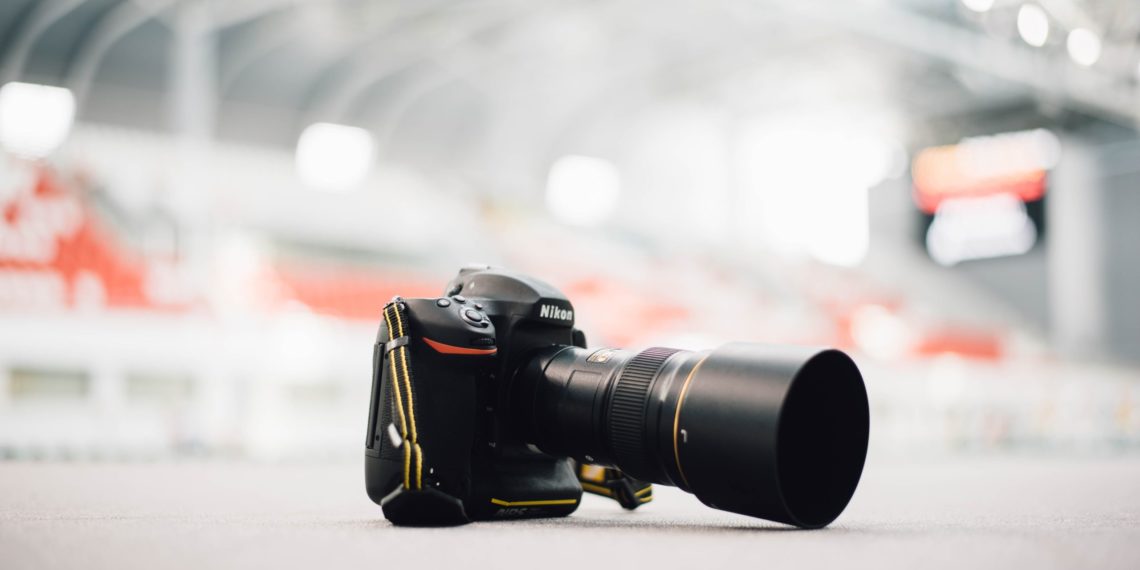
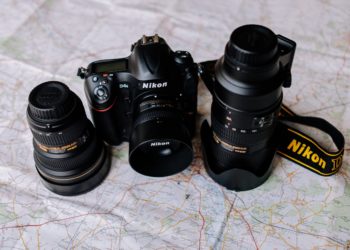
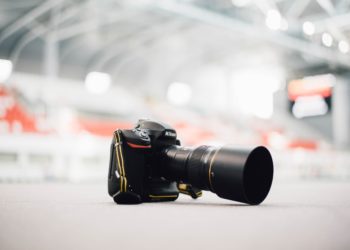



Discussion about this post